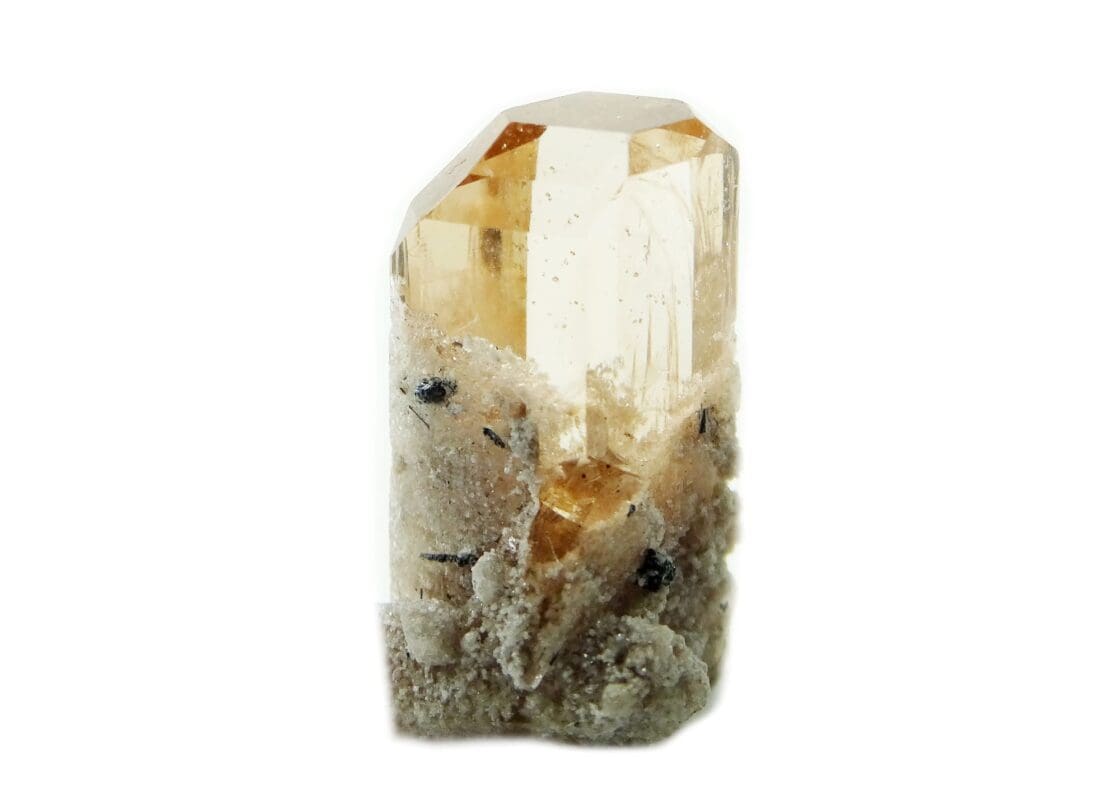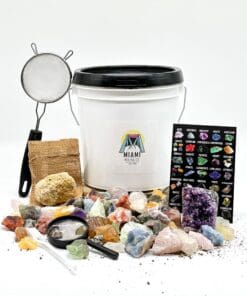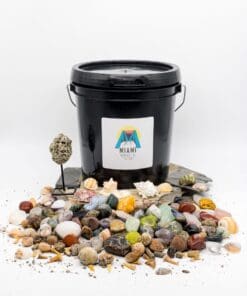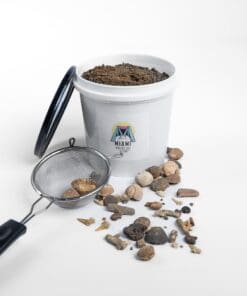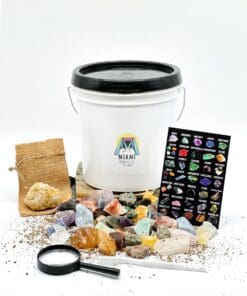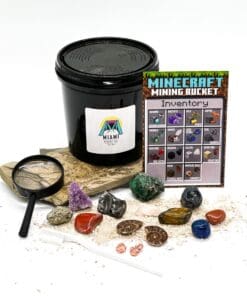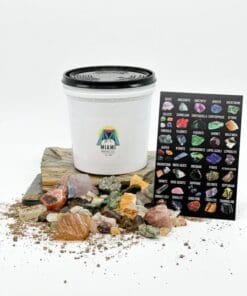Unearth New Hampshire’s Gemological Wonders: Your Ultimate Guide to Gem Mining
New Hampshire, affectionately known as the Granite State, isn’t just renowned for its monumental rocks. It’s a haven for gem enthusiasts and prospectors. The state’s diverse geology has bestowed it with a wide array of minerals and gemstones, beckoning both amateur and professional collectors alike. This article aims to be a comprehensive guide to gem mining in New Hampshire, helping you unearth the state’s hidden treasures.
The Most Popular Gemstones in New Hampshire
Beyond the massive slabs of granite that earned New Hampshire its moniker as the Granite State, this region is a veritable treasure trove of gems both common and rare. Here’s a breakdown of the gemstones you might encounter:
Rare Gemstones Found in New Hampshire
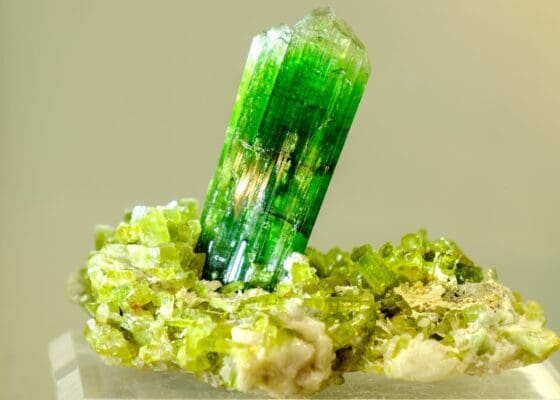
| Gemstone | Description |
|---|---|
| U.S. Pegmatite Beryl | Distinguished by its size, this variety of beryl found in pegmatites dazzles with large, clear crystals. |
| Rose Quartz | Unlike the more common milky white variety, the rose quartz from New Hampshire has a delicate pink hue. |
| Green Tourmaline | A captivating gem with a vibrant green shade, green tourmaline from New Hampshire is a collector’s delight. |
| Topaz | Although not found in large quantities, the state occasionally yields clear, perfect crystals of this gem. |
| Amazonite | A blue-green variety of microcline feldspar, its presence in New Hampshire pegmatites is quite limited, making it a prized find. |
Common Gemstones Found in New Hampshire

| Gemstone | Description |
|---|---|
| Smoky Quartz | New Hampshire’s state gem, it varies from light gray to deep black, often found in large, clear crystals. |
| Garnet | Ranging from deep red to purplish-red, garnets are often found in mica schists in various parts of the state. |
| Muscovite Mica | Often found in sheets, this shimmering mineral has a silver hue and is common in New Hampshire’s pegmatites. |
| Beryl (Aquamarine variety) | A blue to greenish-blue variety of beryl, aquamarine can be found in several mines across the state. |
| Fluorite | Occasionally found in granite pegmatites, its crystal habit can be cubic or octahedral and displays varying colors. |
| Feldspar | As a major component of granite, feldspar is found abundantly throughout New Hampshire in multiple varieties. |
| Amethyst | A purple variety of quartz, amethyst deposits can be located in various parts of New Hampshire. |
| Graphite | While not a gem, graphite’s metallic luster and dark color make it an interesting and common find. |
| Lepidolite | This lilac-gray or rose-colored member of the mica group contains lithium and is found in some of the state’s pegmatites. |
| Calcite | Often found in hydrothermal veins, calcite crystals can be clear, white, or even contain hues of yellow or blue. |
From the casual collector to the serious gem enthusiast, New Hampshire promises an array of stunning gems that reflect its rich geologic history. Whether you’re after the common beauties or rare treasures, the state has something for everyone.
Top Gem Mining Locations in New Hampshire

- Ruggles Mine in Grafton: A historic site that was operational for over 150 years, Ruggles is famous for its deposits of mica, garnet, and beryl. Located off Route 4 in Grafton, the mine is typically open from May to October, with an entrance fee of around $25 for adults.
- Palermo Mine in North Groton: If you have an interest in phosphate minerals and pegmatitic gemstones, Palermo is your go-to. Open from June to September, it’s situated just off North Groton Road and has a fee of approximately $20 per person.
- Moenkopi Digs: Offering both guided tours and fee-dig opportunities, Moenkopi Digs stands out as a favorite among families and serious collectors alike. Located in the southern part of the state, operating hours vary, so it’s advised to call ahead.
- White Mountain National Forest: For those seeking smoky quartz and aquamarine, this vast national forest offers multiple localities. While there’s no specific fee for gem hunting, a recreation pass might be required.
- Jackson’s Crossroad Amethyst Mine: Nestled in the northern regions, this site is renowned for its deep purple amethysts. Open primarily during the summer months, a day of digging typically costs around $15.
- Tamworth Garnet Mines: As the name suggests, this site in Tamworth is a hotspot for garnets. Operating from June to early October, there’s a nominal fee of $10 for a day’s dig.
- Keene’s Cheshire Pegmatites: Located in Keene, this site is ideal for beryl and quartz enthusiasts. Open from May to September, a typical fee is about $20 per person.
- Bartlett Blue Mine: Situated in Bartlett, this mine is a haven for those chasing blue tourmaline. The mining season usually stretches from late spring to early fall, with an entrance fee of $25 for adults.
- Conway Granite Quarries: Spread across Conway, these quarries offer a rich yield of feldspar and mica. Open year-round, but it’s best to visit during warmer months. The fee structure varies, so checking ahead is advised.
- Warren’s Moat Mountain: For smoky quartz and topaz enthusiasts, Warren’s Moat Mountain is the place to be. Open from April to November, with a standard fee of $15 for a day’s adventure.
Before setting off on your gem-hunting journey in New Hampshire, always ensure you contact the respective mining site for the most current operating hours, fees, and any necessary reservations or permits. New Hampshire’s diverse geological backdrop promises an exciting and rewarding experience for gem enthusiasts of all levels.
History of Gem Mining in New Hampshire

Gem mining in New Hampshire boasts a rich tapestry of history that intertwines with the broader story of the state’s development. The state’s rocky terrain, an embodiment of millennia of geological activity, has held sparkling secrets that generations have sought to unveil.
The Native Americans were the original miners in the region, extracting superior-quality quartz for tools and trading long before European settlers arrived. Their deep understanding of the land and its resources set the stage for the gem mining activities that would follow.
The 1800s marked a significant turning point. As New Hampshire saw an influx of settlers, word spread about the land’s bounty. The mining landscape began to shift in the early part of this century. Ruggles Mine, which opened in Grafton in 1805, epitomized this era. It became a significant hub for mica, a mineral used in stoves and lanterns. Over time, the mining focus expanded, and Ruggles began to produce sizable beryl and garnet specimens, catapulting it into the national spotlight.
Parallel to Ruggles, numerous other mines sprang to life. Towns such as Alstead and Grafton became synonymous with gem production. Beryl, tourmaline, and quartz, among others, were frequently extracted, establishing New Hampshire as a gem-rich state.
As the 1900s rolled in, commercial mining saw a decline, largely due to the availability of cheaper alternatives and synthetic minerals. However, this slowdown paved the way for hobbyists and collectors to dominate the scene. Gem mining began to be viewed not just as an industrial endeavor but also as a recreational activity, one that brought families and communities together.
Today, while the large-scale commercial operations of the past are no more, the state’s gem mining history lives on. Every smoky quartz or garnet found in the state’s mines carries with it a piece of this history, connecting modern-day enthusiasts with miners from centuries ago. The continuation of this tradition, from Native Americans to present-day gem hunters, highlights New Hampshire’s enduring appeal as a land of hidden treasures.
Gem Mining Regulations in New Hampshire

In the Granite State, gem mining isn’t just about picking up a shovel and digging. The process is regulated by a set of guidelines, ensuring that the hobby is both environmentally friendly and respectful of property rights. New Hampshire’s regulatory landscape for gem mining is tailored to balance the interests of hobbyists, commercial operations, landowners, and the environment.
- Land Ownership and Permission: The most fundamental regulation revolves around land ownership. Before any mining activity, it’s essential to determine who owns the land. If it’s privately owned, explicit permission from the landowner is a prerequisite. Many mines that are open to the public operate on private lands and charge a fee. But for sites not explicitly designated for public mining, always get permission. This not only keeps you on the right side of the law but fosters a culture of respect among the mining community.
- Environmental Protection: The state of New Hampshire places a high emphasis on environmental conservation. Gem mining can be invasive and, if not done responsibly, may harm local ecosystems. Activities like sluicing or dredging, which can impact water sources and aquatic life, might require a permit. Additionally, refilling dug pits and practicing “Leave No Trace” principles ensures minimal disruption to the natural environment.
- Historical and Cultural Sites: Some areas within New Hampshire have historical or cultural significance. Mining in these areas can be restrictive or outright prohibited. For instance, areas within the White Mountain National Forest, which carry both environmental and historical significance, might have special guidelines.
- Commercial vs. Recreational Mining: There’s a distinct difference between commercial and recreational mining. Those intending to sell their finds might need to obtain a business license. Additionally, commercial operations might be subject to stricter regulations regarding land restoration and usage.
- Quantity Restrictions: Some areas have limits on the amount of material you can extract. These regulations aim to ensure that ample resources remain for future generations of gem enthusiasts.
- Safety Standards: Certain mining activities, especially in quarries or areas with deep pits, may have safety protocols to avoid accidents. It’s crucial to be aware of these guidelines and abide by them.
- National and State Parks: While many parks in New Hampshire offer recreational activities, it’s always a good idea to check their specific policies regarding gem hunting. Some parks may allow surface collection but prohibit digging, while others might restrict gem hunting altogether.
In conclusion, while New Hampshire is a treasure trove for gem enthusiasts, it’s vital to mine responsibly. Adhering to the state’s regulations ensures that gem hunting remains a sustainable and enjoyable activity for all. Always research, respect property rights, and practice ethical mining to preserve New Hampshire’s rich gem history for future generations.
Necessary Tools and Equipment for Gem Mining in New Hampshire
In the pursuit of unearthing New Hampshire’s hidden gemological treasures, having the right tools and equipment is paramount. Not only does it increase the chances of a successful find, but it also ensures that the process is efficient and environmentally responsible. Here’s a guide tailored to the varied mining terrains of the Granite State:
1. Screening and Classifying Tools: Reveal those hidden treasures!
Description: Useful for sifting through loose material, especially in areas where smaller gems might be prevalent.

🛒 Explore Top Screening Sets on Amazon
2. Shovels and Trowels: Digging deep or just scratching the surface?
Description: Useful for removing overburden and accessing the gem-rich layers beneath.

🛒 Find Quality Shovels and Trowels on Amazon
3. Picks and Hammers: The backbone of any gem hunting endeavor.
Description: These can help in breaking apart harder rock formations where gems might be embedded.

🛒 Check Out Best Picks and Hammers on Amazon
4. Buckets: Your trusted companion for carrying treasures.
Description: Once you find gems, you’ll need something in which to safely store them. Cloth bags can also be useful for larger finds.

🛒 Shop for Reliable Buckets on Amazon
5. Magnifying Glass: Every detail counts!
Description: To closely examine potential finds. Some gems may not look impressive to the naked eye but reveal their beauty under magnification.

🛒 Grab Your Magnifying Glass on Amazon
6. Guidebooks and Field Guides: Knowledge at your fingertips.
Description: These are invaluable, especially for beginners. They can help identify potential gems and offer insights into where certain types of stones might be found.

🛒 Discover the Best Field Guides on Amazon
7. Containers and Bags: Organize, store, and flaunt your finds.
Description: As you collect specimens, having durable bags or containers prevents damage to your finds and makes it easier to carry them.

🛒 Shop for Storage Solutions on Amazon
8. First Aid Kit: Better safe than sorry!
Description: Accidents can happen, so it’s always wise to have a basic first aid kit on hand. Include band-aids, antiseptics, tweezers, and any personal medication.

🛒 Shop for your First Aid Kit on Amazon
In conclusion, while the thrill of the hunt and the allure of what lies beneath the earth are a significant part of gem mining’s appeal, being well-prepared is equally essential. Investing in the right tools, and understanding when and how to use them, can make your New Hampshire gem hunting experience both productive and enjoyable.
Tips and Tricks for Successful Gem Mining in New Hampshire

Whether you’re a seasoned miner or a beginner looking to dive into the gem-rich terrains of New Hampshire, there’s always more to learn. The art of gem mining, much like the gems themselves, is multifaceted. Here are some valuable insights to enhance your mining adventures in the Granite State:
- Research is Key: Before you head out, take the time to understand the geological attributes of your chosen location. Knowing which gems are native to an area can significantly enhance your chances of a successful find.
- Local Expertise: Engaging with local miners or joining a local mineral club can offer invaluable insights. They might share lesser-known spots, or tips specific to mining in a particular area.
- Start Early: Most mining sites, especially the popular ones, can get crowded as the day progresses. An early start gives you the advantage of choosing the best spots and mining undisturbed.
- Observe the Land: Before digging in, survey the land. Look for signs like unusual rock formations or previously excavated areas. These might hint at potential gem-rich zones.
- Layered Approach: When digging, adopt a layered approach. Instead of random digging, remove one layer at a time. Often, gems are located in specific strata, and this methodical approach can be more productive.
- Stay Patient: Gem mining is as much about patience as it is about technique. You might not always find what you’re looking for immediately. Persistence often pays off.
- Safety First: Always be aware of your surroundings. If you’re near water, be mindful of the current. In wooded areas, watch out for wildlife. And always inform someone of your whereabouts if you’re exploring a new or remote location.
- Hydration and Nutrition: Mining can be physically demanding. Carry ample water, and snacks or a packed meal, to keep your energy levels up.
- Respect the Environment: The thrill of the find should never come at the cost of the environment. Always refill any holes you dig, avoid disturbing local flora and fauna, and carry out any trash or waste.
- Know When to Stop: If you’ve been at a spot for a long time with little to no success, it might be time to move on. Sometimes changing locations can shift your luck.
In the world of gem mining, every expedition is a learning experience. Each stone unearthed tells a tale of New Hampshire’s geological past, and every trip adds to your repository of knowledge. So, while the tips above can guide you, always stay curious, respectful, and open to the myriad lessons the land has to offer.
Handling Your Gemstone Finds

Discovering a gemstone during your mining expedition is exhilarating, but the journey with your newfound treasure doesn’t end there. Properly handling, cleaning, and preserving these gemstones is crucial to maintain their natural beauty and value. Here’s how to take care of your gemstone finds in New Hampshire:
- Initial Cleaning: Begin by gently removing any loose dirt or debris using a soft brush. If the stone is sturdy (like quartz or garnet), you can rinse it in water. However, be cautious with more fragile specimens to prevent breakage or erosion.
- Advanced Cleaning: For stubborn dirt, immerse the gem in a bowl of warm soapy water. Using a soft toothbrush, gently scrub the stone. Remember, some minerals can be affected by harsh chemicals, so it’s best to stick to mild soap.
- Identification: If you’re unsure about the type of gemstone you’ve found, consider using a field guide. If you’re still uncertain, local gem and mineral clubs or gemologists can provide expert identification.
- Documentation: Keep a detailed record of each find. Note down the location, date of discovery, and any unique characteristics. This not only helps in tracking your collection but also adds value if you ever decide to sell or exhibit your gems.
- Storage: Store each gemstone separately to avoid scratches or damages. Soft pouches or individual boxes work best. For more delicate stones, consider using padded containers.
- Display: If you wish to showcase your gemstones, invest in a proper display case that protects them from dust and direct sunlight, which can fade some minerals over time.
- Valuation: If you believe you’ve found a particularly valuable gem, consider getting it appraised. Certified gemologists can offer insights into a gem’s quality, origin, and market value.
- Care and Maintenance: Over time, even stored gems can accumulate dust. Regularly inspect your collection and gently clean when necessary. Avoid using ultrasonic cleaners unless you’re sure the gem can withstand it.
- Learning Further: Joining a lapidary club can provide hands-on experience in gem cutting and polishing, helping you enhance the beauty of your finds.
- Ethical Considerations: If you decide to sell your gems, ensure transparency regarding its origin and any treatments it might have undergone. Honesty enhances trust and the overall appreciation of gem collecting.
In essence, the stones you unearth are not just geological wonders but also a testament to your efforts and dedication. Treating them with care ensures they remain a cherished part of your collection, continuing to shine in their natural splendor for years to come.
Famous Gemstone Finds in New Hampshire
New Hampshire, with its rich geological history, has witnessed several remarkable gemstone discoveries. These finds not only bolster the state’s reputation among gem enthusiasts but also weave into the tapestry of its cultural and historical narratives. Here are some of the most iconic gemstone finds in the Granite State:
- The Palermo Mine Finds: Located in North Groton, the Palermo Mine is renowned for its exceptional phosphate minerals. Among its many discoveries, the giant lepidolite mica crystals stand out, captivating both scientists and collectors.
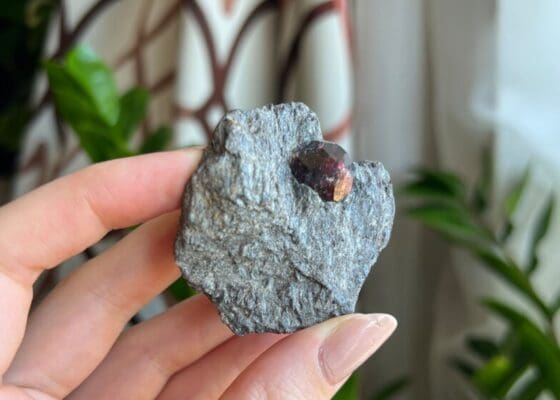
- The Deering Garnet: In the early 1900s, a massive garnet crystal weighing over 2.5 kilograms was unearthed in Deering. Its size and clarity make it one of the most significant garnet finds in the region.
- Smoky Quartz of Moat Mountain: New Hampshire’s state gem, the smoky quartz, has been found in abundance on Moat Mountain. Some of the largest and finest specimens, exhibiting a deep, smoky hue, have been sourced from here.
- The Ruggles Mine Beryl: Ruggles Mine in Grafton is celebrated for its vast deposits of beryl. One notable find from the 20th century was a beryl crystal cluster weighing over a ton, which garnered significant attention from mineralogists worldwide.
- Amethyst Treasures of Deer Hill: Deer Hill in Stow is famed for its amethyst finds. Among them, a stunning deep purple crystal cluster discovered in the late 1980s remains a testament to the area’s gemological wealth.
- The Parker Mountain Agate: This site is revered for its beautifully patterned agates. One particularly striking find featured vivid red and orange banding, making it a prized possession for collectors.
- Rose Quartz of Conway: Conway has gifted gem enthusiasts with rose quartz specimens of unparalleled beauty. One such piece, with its soft pink hue and exceptional clarity, is often showcased in mineral exhibitions.
- Alstead’s Tourmaline Surprises: Alstead has seen multiple discoveries of multi-colored tourmaline crystals. These finds, with their rich hues and intricate growth patterns, have been featured in many international gem collections.
- Topaz of the Ossipee Mountains: Some of the state’s finest topaz specimens, characterized by their brilliant luster and clarity, have been sourced from these mountains, adding to New Hampshire’s gemological legacy.
- Fluorite Finds of the White Mountains: Among the various minerals unearthed here, a green fluorite crystal, admired for its near-perfect cubic form, stands out, epitomizing the mineral diversity of the region.
These storied finds, apart from their intrinsic beauty and value, echo tales of adventure, perseverance, and the relentless human spirit of discovery. They underscore New Hampshire’s rightful place on the global gemological map and inspire future generations of miners and collectors.
Additional Gem Mining Opportunities

For those who have cultivated a love for gem hunting in New Hampshire, the quest doesn’t have to end within the state’s borders. Several neighboring states also offer bountiful opportunities for enthusiasts to continue their mineral and gemstone pursuits:
- Vermont Gem Mining: Known for its beautiful grossular garnet and the elusive gold sheen observed in some specimens. Vermont also offers opportunities to find talc and asbestos minerals.
- Maine Gem Mining: Famed for its tourmaline, especially near the Oxford County region. Maine is also home to impressive finds of rose quartz, amethyst, and beryl.
- Massachusetts Gem Mining: While more famous for its historical sites, Massachusetts does have pockets of mineral wealth, with rhodonite, babingtonite, and some rare garnets waiting to be discovered.
- New York Gem Mining: Beyond the hustle and bustle of New York City, the state boasts deposits of garnets, especially in the Adirondack Mountains, as well as Herkimer diamonds (a type of quartz) found in Herkimer County.
- Connecticut Gem Mining: Notably recognized for its almandine garnets, Connecticut also offers chances to find beryl and tourmaline.
Each of these states brings its own unique geology and set of gemological treasures. Venturing out to explore them not only satiates the thirst for discovery but also broadens one’s understanding of the rich mineral tapestry of the northeastern United States.
Get the insider’s view on gem mining with our detailed Gem Mining Near Me guide.
The Enchantment of Gem Pursuits and At-Home Adventures
The allure of gem hunting in New Hampshire resonates deeply, intertwining the thrill of discovery with the state’s rich geological tapestry. Every expedition is more than just a search for precious stones; it’s a journey into the heart of the earth, where stories of millennia gone by are encapsulated in shimmering crystals and radiant minerals. The Granite State invites both the novice and the expert, promising treasures that often surpass the tangible, leaving an indelible mark on the soul.
Yet, for those who might not have the means to travel or face the unpredictable challenges of nature, the adventure needn’t be curtailed. Introducing the Gem Mining Kit—an alternative gateway to the world of gemology. This kit brings the excitement of gem hunting right to your doorstep. Carefully curated, it contains a range of gems and minerals, allowing enthusiasts to experience the joy of discovery from the comfort of their homes. Whether you’re reminiscing about past adventures or kindling a new passion, the Gem Mining Kit ensures the magic continues, wherever you may be.

